Students return from covering World Cup with sharpened skills and AP bylines
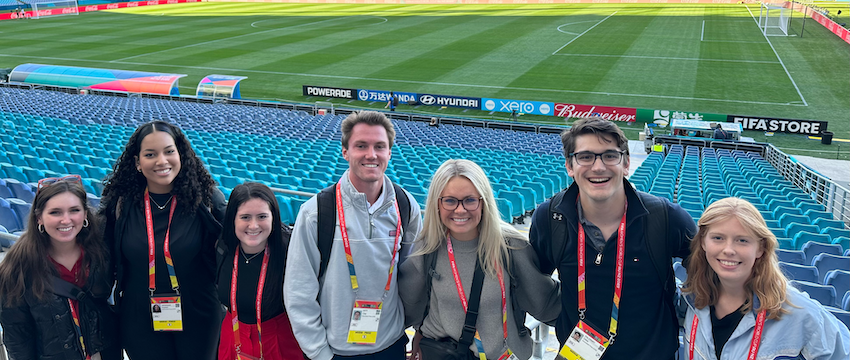
Students return from covering World Cup with sharpened skills and AP bylines
This summer, 17 University of Georgia sports media and visual journalism students traveled to Australia to cover the 2023 FIFA Women’s World Cup for The Associated Press.
“It’s one thing to sit in a class and look at great works, breaking them down into component parts to understand how they were made,” said Mark Johnson, a principal lecturer in Journalism, who was one of three professors on the trip. “But to be on the pitch for the largest women’s sporting event in history, with deadlines every minute and seeing the works that you produced show up, minutes after they were made, on web sites and social media feeds around the world—that’s a whole new level of learning.”
The students were separated into three groups and sent to one of three Australian cities – Sydney, Brisbane and Melbourne – where they spent nearly three weeks contributing to the AP’s coverage of the historic sporting event.
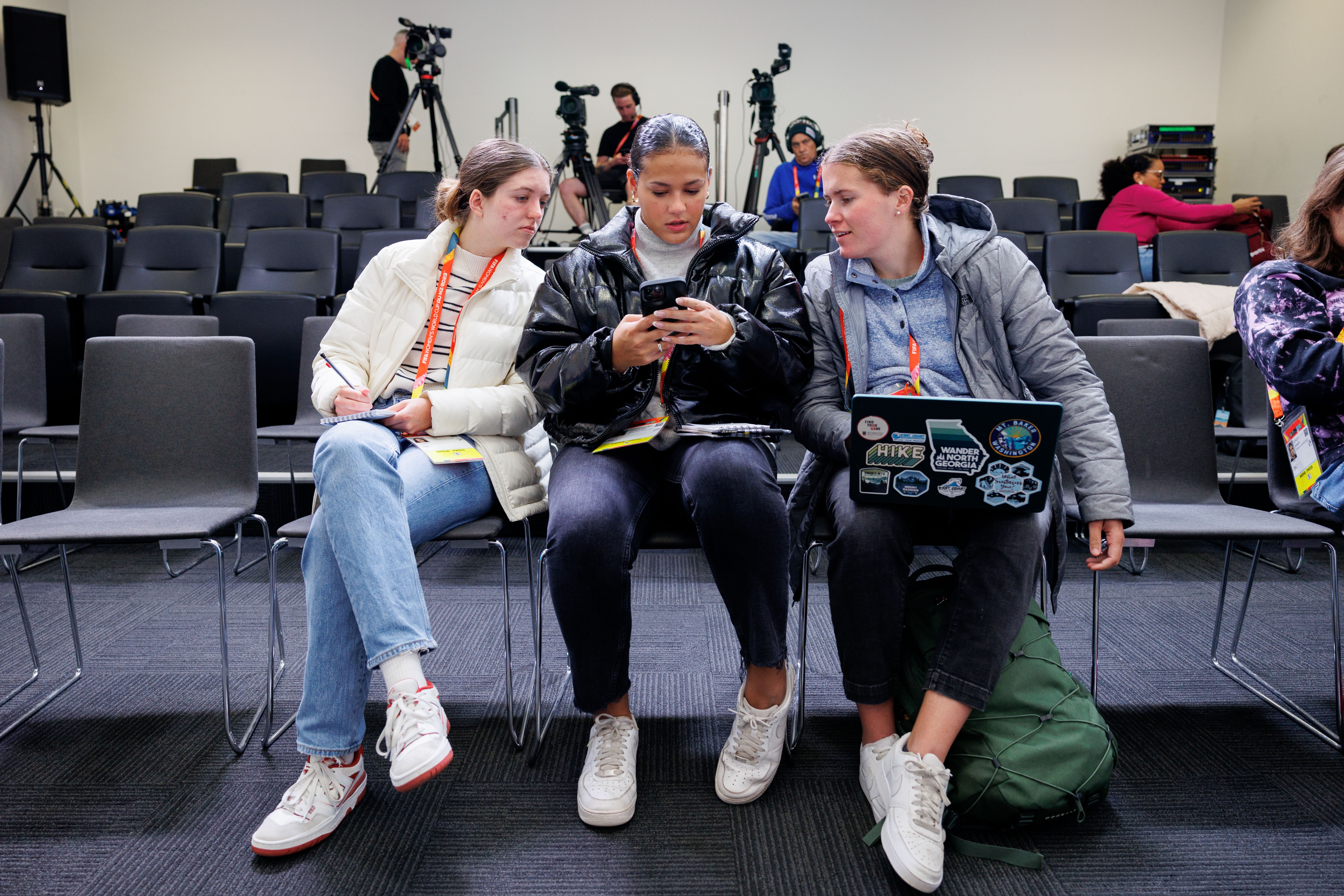
“This was massive. This was the best decision I’ve ever made,” said sports media student Luke Winstel. “I transferred to Georgia a little over a year ago, and this is why. These opportunities.” Winstel covered the Australian national team as a writer in Brisbane.
Accompanying the students on the trip were Johnson and two other Grady College faculty members: Vicki Michaelis, the John Huland Carmical Chair in Sports Journalism & Society, and Carlo Finlay, academic professional and assistant director of the Carmical Sports Media Institute. Michaelis, based in Sydney, and Finlay, in Brisbane, functioned as the editors for the writers, while Johnson, in Melbourne, served as the students’ photo editor.
The trip was funded in large part by the John Huland Carmical Foundation, with additional support from the Carolyn McKenzie and Don E. Carter Chair in Journalism Excellence and Carter Excellence funds.
The students were also supported by Canon Professional Services through a loan of top-level equipment and on-site technical support. Students were able to plug these cameras into field-level network cables and send images seconds after they were made.
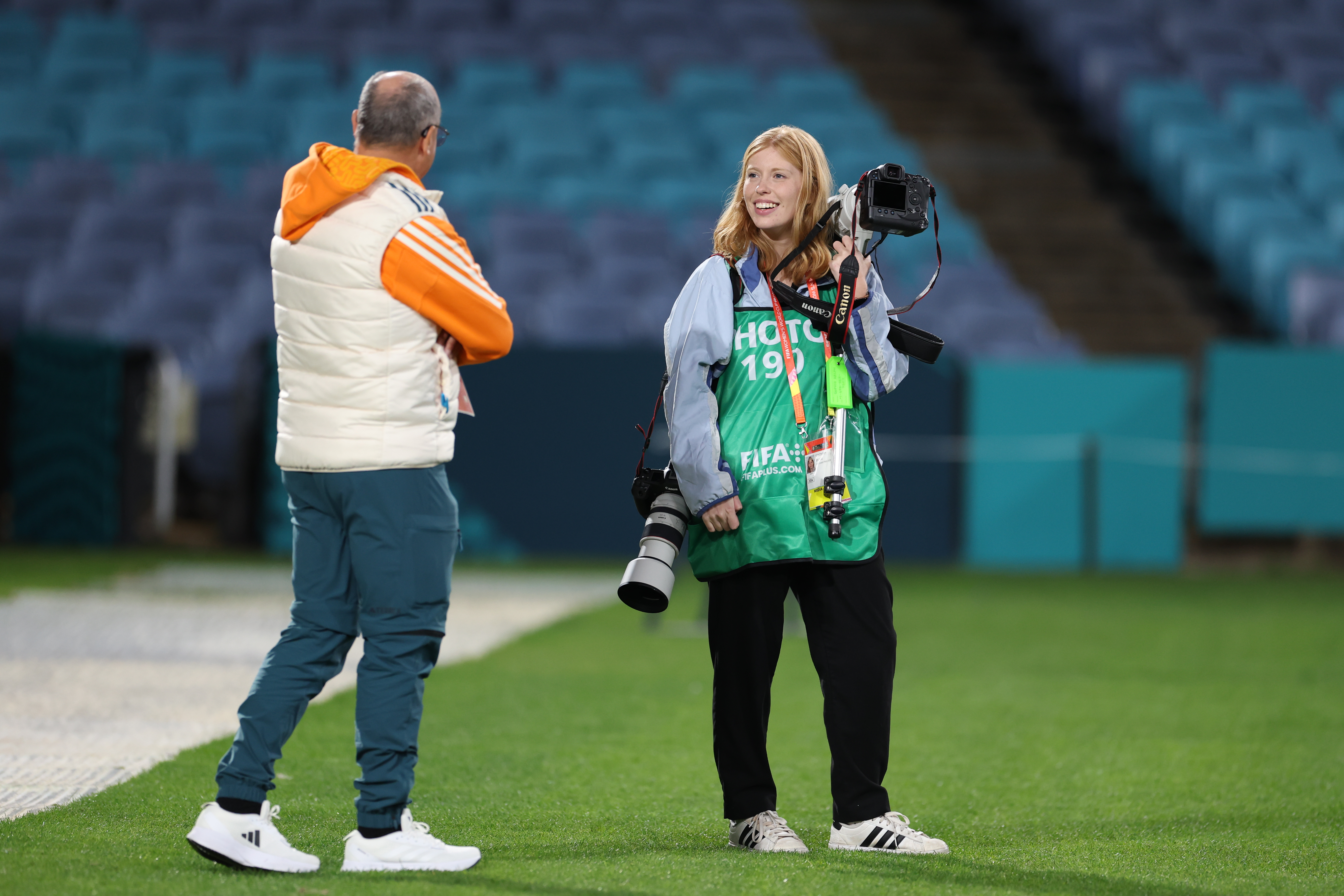
Before the World Cup began, each writer was assigned a team to research, Michaelis explained. They developed an understanding of the history of that team and all of the surrounding storylines. They then went to as many training sessions and media availabilities as they could for their assigned teams.
Leading into matches, they wrote advanced features and spot-news stories. On match days, they wrote recaps, which the AP required be filed by the final whistle, as well as breaking news stories and feature sidebars. To report the stories, the students typically had to navigate the mixed zone, a space where reporters attempt to snag a quote from players as they walk to the locker room.
Michaelis and Finlay often found themselves working in documents simultaneously with the students, editing on the fly. Michaelis and Finlay also helped students craft story ideas and acted as the liaisons between the students and the AP, filing stories when they were ready to be published.
“The students’ commitment to producing high-quality work day after day after day, despite some early mornings and many late nights, showed how much they cared and how much they valued this experience,” said Michaelis. “Seeing that was so rewarding for me.”
“This was one of the most rewarding things of my entire career, seeing how professional the students were and how high of a level they worked on,” added Finlay.
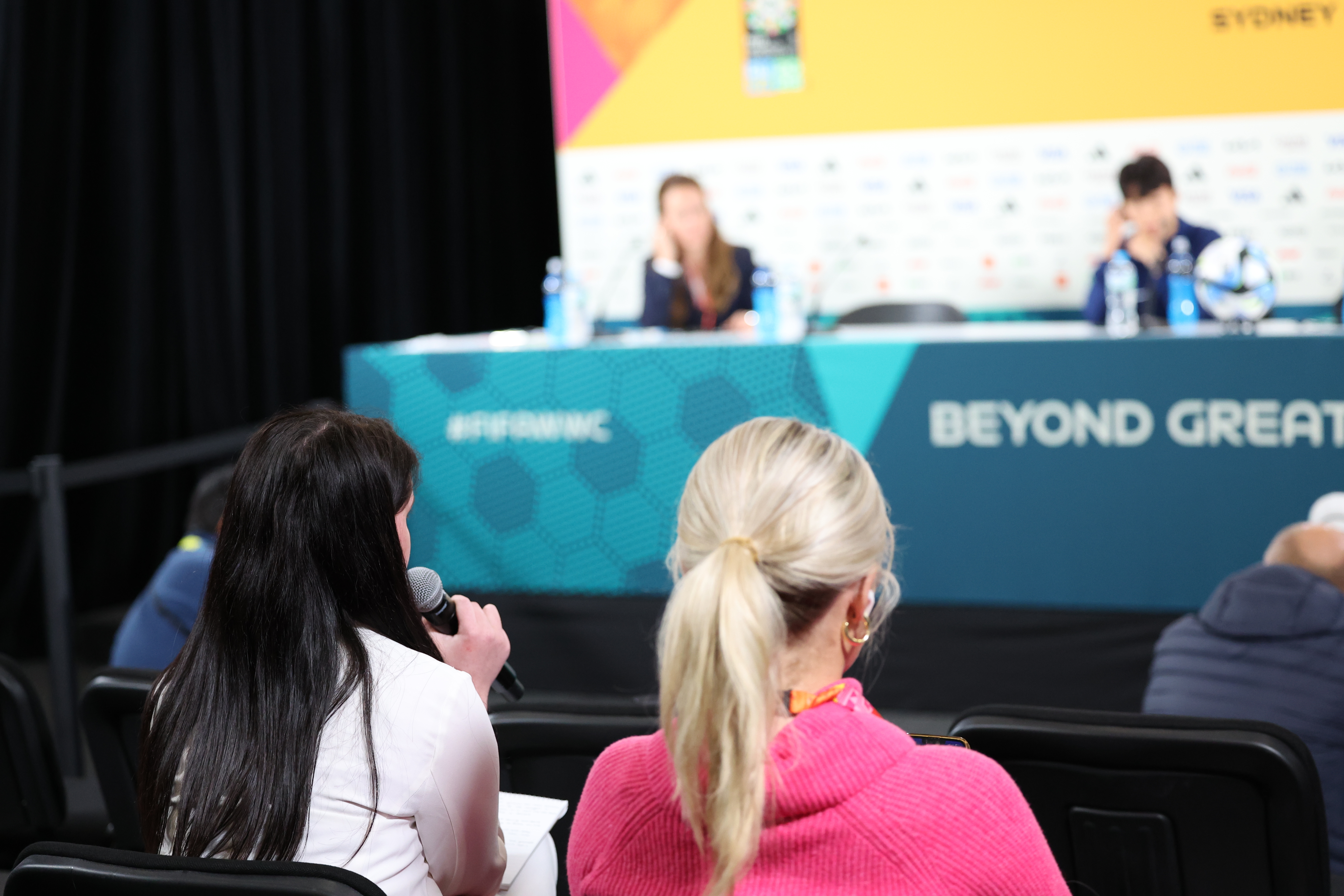
Similarly, the photojournalism students worked on player profiles, feature packages and live-game coverage, Johnson explained. The students were able to plug their cameras into network cables on the pitch to send back for editing in real time.
Johnson, too, acted as the intermediary between the students and the AP, making selections, applying metadata and captions and then handing them off for consideration.
“Going in, our expectation was that their work would be looked at after the matches,” said Johnson. “Once we got started, though, the AP started asking for some images seconds after key moments happened. Goals, injuries, reactions – all of these were sent off within two or three minutes of them happening on the field.”
“The work they produced far exceeded what I’d hoped for – and my hopes were pretty high,” Johnson added. “They fell into the rhythm of the match quickly, moved distractions to the back of their mind and focused on the story that was quickly evolving in front of them.”
For the sports media and visual journalism students, the experience sharpened their skills while reaffirming that they have what it takes to excel in their respective fields.
“This trip really helped me grow in so many ways,” said Jessica Gratigny, a student photographer who was based in Sydney. “With soccer being such a fast-paced sport, I had to stay alert. I learned to anticipate what might happen, while also staying ready for the unexpected.”
“What I gained were such high standards,” added Winstel. “You have to make the most out of everything. I learned a lot about how to do that, and how to compete.”
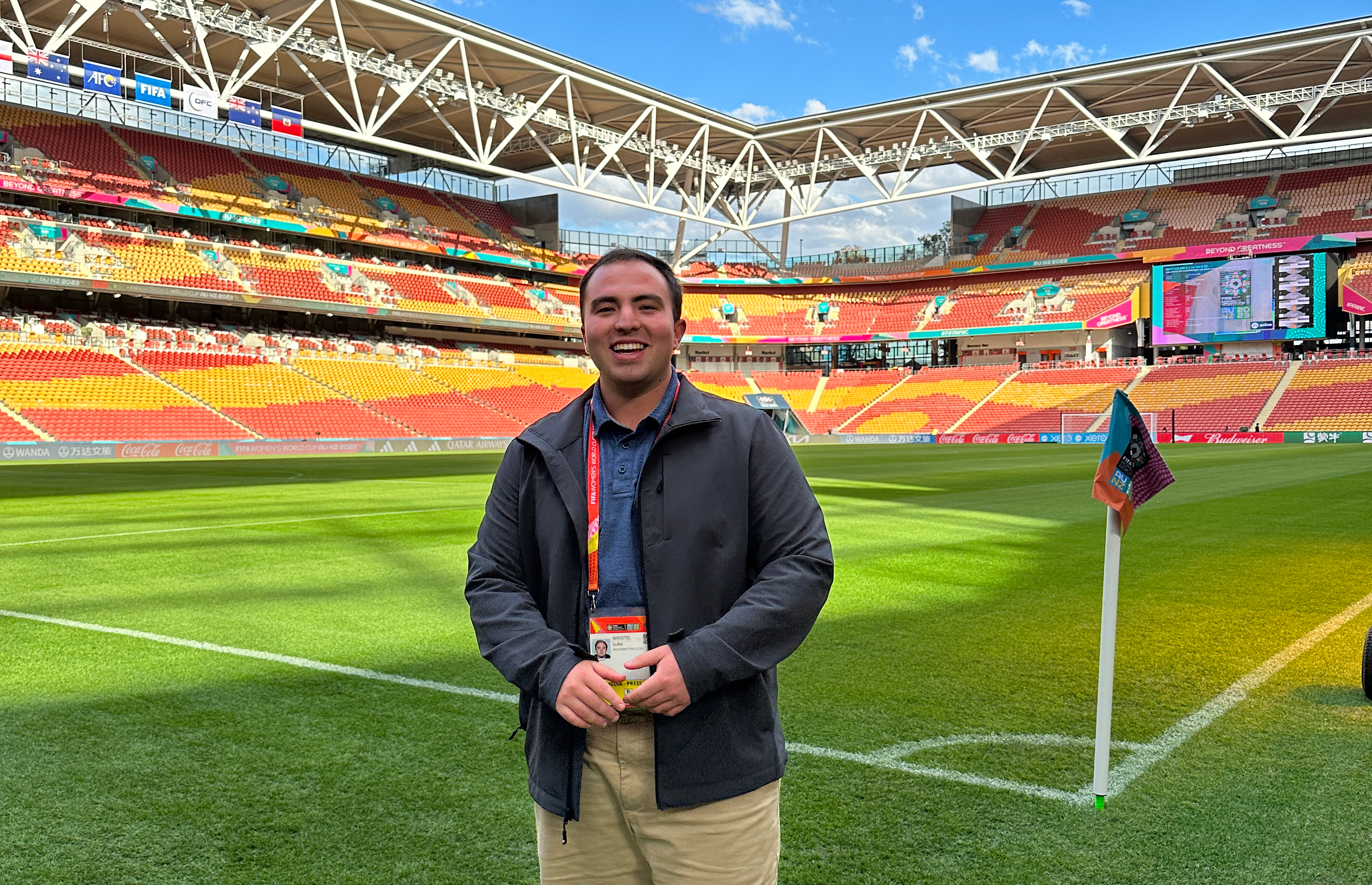
The full experience of covering the World Cup, which involved meeting journalists, interacting with players and witnessing fans from countries all around the world, also left lasting cultural impressions.
“I’ll never forget being in Marta’s last World Cup press conference,” said Savannah Hernandez, a student writer who was based in Melbourne. “When asked about her legacy, she spoke about how much the women’s game has grown since she started playing. She noted the increase of women journalists in the room. This emotional moment of reflection connected me to the impact of this experience.”
“I don’t think I’ll ever forget the atmosphere,” added Gratigny. “These matches brought together passionate fans of all ages from around the world. Getting to be on the pitch during a match and witness that was just an unreal experience. After a couple of matches, I watched some players diving into the crowd to celebrate with their fans. The way they embraced and celebrated together was truly something special to see.”
“One other thing that will always stick with me is the pep talks from Professor Michaelis,” she continued. “It was really inspiring to get to go on a trip with someone who I admire. She really helped me believe in myself.”